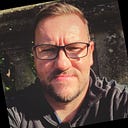Exploring Copenhagen, Denmark
After a long train ride yesterday and a good night’s rest, I set out this morning to begin exploring Copenhagen. The city is fairly compact and most of the interesting sights are within a reasonable walking distance. Of course there’s always the Metro if you need to hop on.
I first headed for city hall. It’s noteworthy and perhaps fitting in Scandinavia that secular buildings, not churches, seem to command the most attention. Completed in 1905, the exterior of Copenhagen’s city hall was inspired by another I’d visited in Siena, Italy, complete with tower.
Inside, there were fascinating details on the walls and ceilings. Animal motifs dominated and I spent an hour just wandering the open halls and rooms. I came across a corner library that was completely empty and took a few minutes to gaze out the window at the people passing below in the square.
It started to rain but it was nearing lunchtime so I ducked into an old Copenhagen streetcar that had been converted into a restaurant. I was early, the first lunch customer of the day.
After making my way to a small table, I smiled at the 1960s American music that was playing. The more you travel, the more you realize the soft power America exerts overseas. Especially here in Europe, our culture shows up often, sometimes in amusing ways.
There are special pedestrian streets that stretch nearly the length of the city. Without car traffic, people stroll without being rushed. There’s time to gaze in windows and sample from food carts here and there. Copenhagen seems built for slowing down and enjoying life.
During World War II, Denmark declared itself neutral but was invaded by Germany in April 1940. I came across a story about evidence of the occupation that had survived to this day. In the old meatpacking district, a building remained that served as a storehouse for potatoes during the war.
Food sources are vital during wartime and the Germans posted soldiers to guard the storehouses. As they soon learned, guarding potatoes during war time wasn’t very exciting. The soldiers began scratching words into the bricks so that now, decades later, people can read the thoughts that passed through their bored minds.
Most of the messages are what you’d expect: names of loved ones and hometowns, drawings and other tributes to home.
But toward the end of the war, you can see the soldiers’ disillusion in solid brick form. One soldier scratched the words from Goebbels’ famous Sportpalast speech, “Wollt ihr den totalen Krieg?” (Do you want total war?) which had been followed by a roaring YES! at the Nazi rally.
The guard on duty didn’t agree. On the brick wall, a small “nein” is scratched below the propaganda minister’s words — something that would have gotten a German soldier into a lot of trouble:
It seemed fitting to next visit the Danish Resistance Museum. Most of the structure was under the ground which I’m sure was exactly as intended considering this was the “underground”. Early in the war, the occupying German authorities allowed the Danes to largely govern themselves.
As the war went on, especially as momentum turned against the Nazis, Danish resistance increased. The museum presented the stories of five Danes with very different perspectives. Some were hostile to the Germans while others sympathized. As you learn, history is often shades of gray rather than black and white.
After I returned to my hotel, it was interesting to watch the opening ceremonies of the Winter Olympics in Beijing from another country’s perspective. I’m used to the American networks naturally focusing on our athletes but of course here, the Danish team was in the spotlight.
The weather tomorrow is predicted to be better, perhaps the sun will even make an appearance. Good night from Denmark!
……….
Thanks for coming along on the trip. If you have questions or suggestions, tweet @JasonRMatheson. Missed an entry? Click here.
